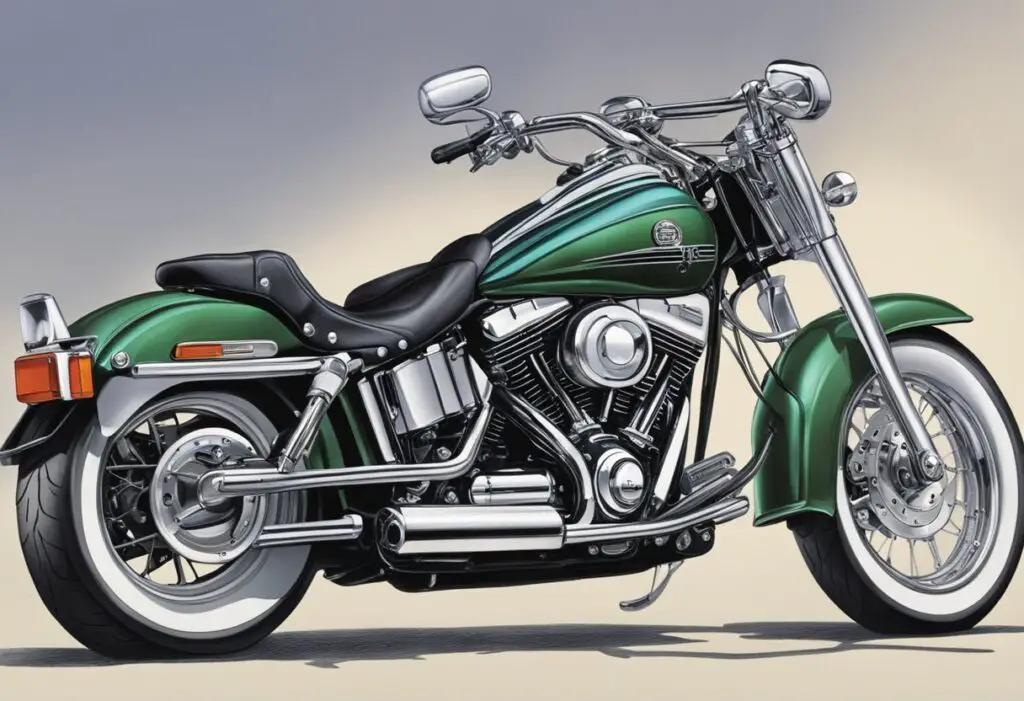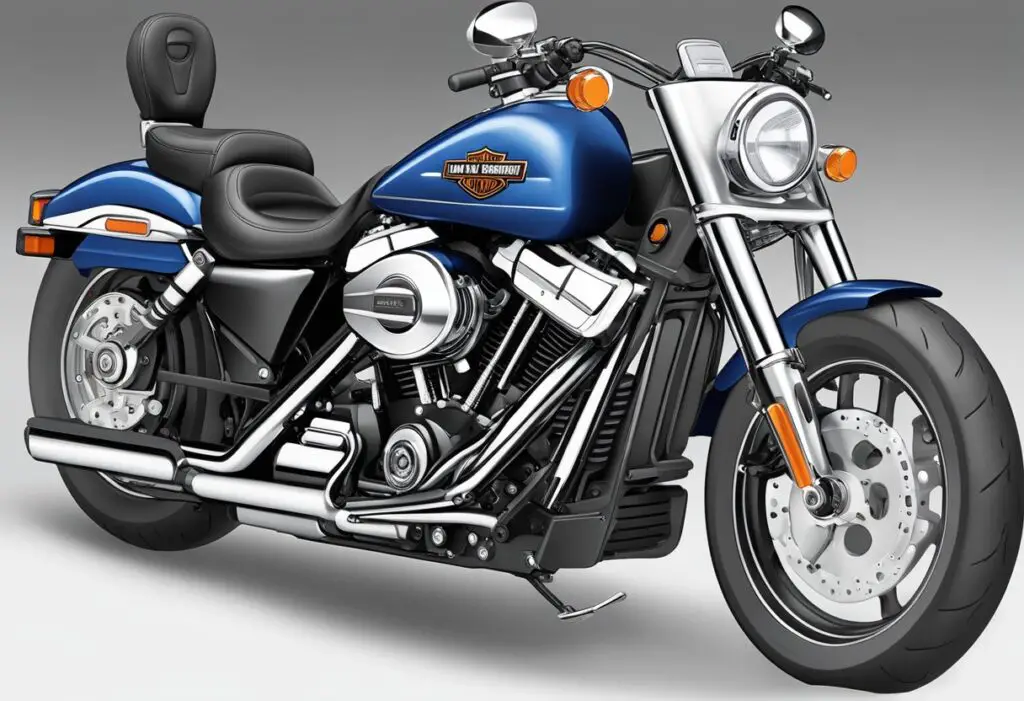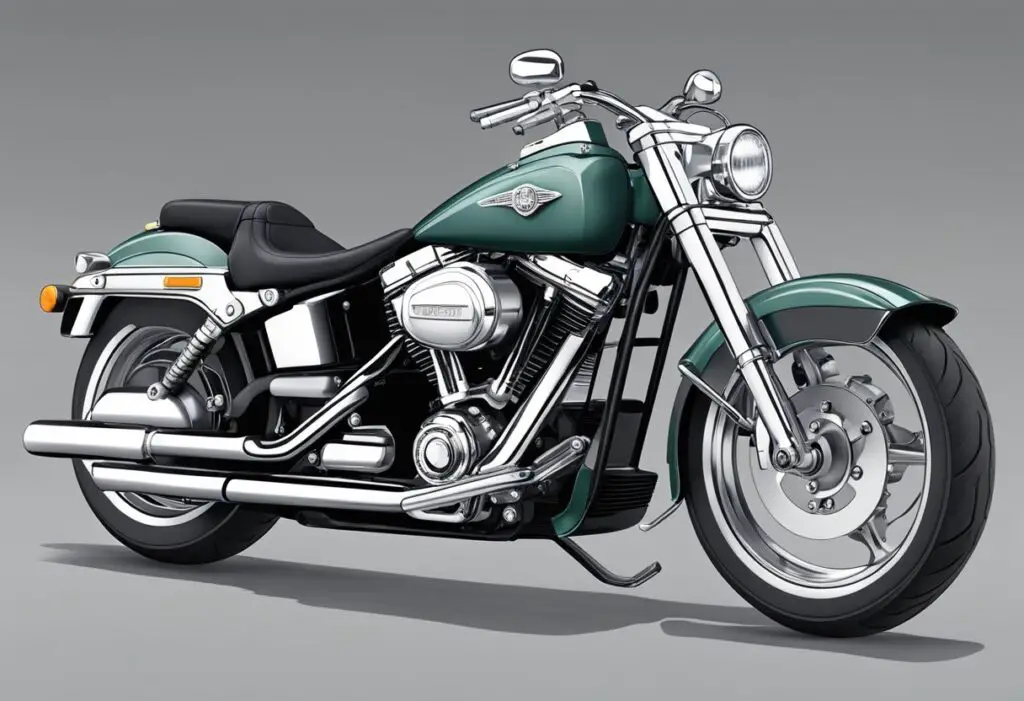Harley-Davidson, established in 1903, has evolved significantly, notably with the adoption of fuel injection technology. Fuel injection technology significantly enhances motorcycle fuel efficiency, performance, and reliability. In this article, we will explore the history of Harley-Davidson’s fuel injection technology and when they started using it.

Harley-Davidson embarked on fuel injection technology exploration in the early 1980s, culminating in the introduction of Electronic Fuel Injection (EFI) in 1995. This milestone was marked by offering EFI as an optional upgrade for the Electra Glide 30th-Anniversary Edition, making it the first model in their lineup to feature this technology. The gradual adoption of EFI across all models underscored Harley-Davidson’s commitment to innovation and environmental standards. However, it was not until 2007 that all Twin Cam Touring, Dyna, and Softail models came standard with electronic fuel injection. The introduction of fuel injection technology was a significant move for Harley-Davidson, enabling the brand to meet expected emission standards and improve the reliability of the engine in varying environmental conditions.
Overall, the introduction of fuel injection technology by Harley-Davidson has been a game-changer in the motorcycle industry, providing better fuel efficiency, performance, and reliability. With the advancement of technology, Harley-Davidson continues to improve its motorcycle engines, providing riders with the best riding experience possible.
History and Overview of Fuel Injection in Harley-Davidson Motorcycles
Early Developments
Harley-Davidson’s exploration of fuel injection, starting in the early 1980s, culminated in the 1995 introduction of EFI, first offered on the Electra Glide.
Transition from Carburetors to EFI
Before the introduction of EFI, carburetors were the primary method of fuel delivery in Harley-Davidson motorcycles. Carburetors were simple and effective, but they had limitations in terms of fuel efficiency and emissions control. EFI improved fuel efficiency and emissions control, appealing to manufacturers.
Transitioning from carburetors, Harley-Davidson introduced EFI in 1995, starting with the Electra Glide. EFI became an option for the Softail line in 2001 and for the Dyna line in 2002. By 2007, EFI was standard across Harley-Davidson’s entire lineup.
Adoption in Harley-Davidson Motorcycles
EFI’s integration into Harley-Davidson’s lineup was gradual, starting in 1995 with the Electra Glide. Over the years, more and more models received EFI as an option until it became standard on all Harley-Davidson motorcycles in 2007.
EFI remains a cornerstone of Harley-Davidson’s modern lineup, evolving significantly since 1995. EFI’s superior fuel efficiency, emissions control, and performance made it the preferred choice.
Technical Aspects of Harley-Davidson EFI

EFI debuted in Harley-Davidson’s lineup in 1995 with the Electra Glide. The company later made EFI a standard feature on all of its motorcycles in 2007. EFI systems replaced traditional carburetors, offering several benefits such as improved fuel economy, better throttle response, and lower emissions.
Components of EFI Systems
EFI systems consist of several components that work together to control the fuel injection process. These components include fuel injectors, fuel pump, fuel pressure regulator, throttle body, sensors, and Electronic Control Unit (ECU).
Electronic Control Unit (ECU)
The ECU is the brain of the EFI system. It receives input signals from various sensors and processes the data to determine the correct fuel injection timing and quantity. The ECU also controls other critical engine functions such as ignition timing, idle speed, and emissions control.
Sensors and Inputs
EFI systems rely on several sensors and inputs to function correctly. These sensors include the Intake Air Temperature (IAT) sensor, Throttle Position (TP) sensor, and Manifold Absolute Pressure (MAP) sensor. The IAT sensor measures the temperature of the incoming air, while the TP sensor measures the position of the throttle. The MAP sensor measures the pressure in the intake manifold.
EFI systems also use other inputs such as engine speed, coolant temperature, and oxygen sensor readings to determine the correct fuel injection timing and quantity. All of these inputs work together to ensure that the engine runs smoothly and efficiently.
In conclusion, EFI systems are a critical component of modern Harley-Davidson motorcycles. They offer several benefits over traditional carburetors, such as improved fuel economy, better throttle response, and lower emissions. EFI systems consist of several components that work together to control the fuel injection process, including fuel injectors, fuel pump, fuel pressure regulator, throttle body, sensors, and Electronic Control Unit (ECU).
How Does Electronic Fuel Injection Impact Performance and Efficiency?

Engine Performance
The introduction of fuel injection in Harley-Davidson motorcycles has had a significant impact on engine performance. Fuel injection provides a more precise and efficient fuel delivery system, resulting in better engine performance. The fuel injection system provides the engine with a precisely metered amount of fuel, ensuring that the engine is running at optimal fuel-to-air ratio. This results in improved power, torque, and acceleration.
Fuel Economy
Fuel injection has also had a positive impact on fuel economy. The fuel injection system provides a more precise and efficient fuel delivery system, which results in better fuel economy. Fuel injection delivers fuel directly into the engine’s combustion chamber, ensuring that the fuel is used more efficiently. This results in improved fuel efficiency and reduced fuel consumption.
Emissions Reduction
The introduction of fuel injection in Harley-Davidson motorcycles has also had a positive impact on emissions reduction. Fuel injection provides a more precise and efficient fuel delivery system, which results in reduced emissions. The fuel injection system delivers fuel directly into the engine’s combustion chamber, ensuring that the fuel is burned more efficiently. This results in reduced emissions and a cleaner environment.
In summary, the introduction of fuel injection in Harley-Davidson motorcycles has had a significant impact on performance, fuel economy, and emissions reduction. The fuel injection system provides a more precise and efficient fuel delivery system, resulting in improved engine performance, better fuel economy, and reduced emissions.
Were Fuel Injection Systems Different By Model?

Harley-Davidson introduced electronic fuel injection (EFI) as an option for the FL-series Touring bikes starting with the 1996 model. However, it wasn’t until 2007 that EFI became standard on all Harley-Davidson motorcycles. Here are some of the model-specific fuel injection systems found on Harley-Davidson motorcycles:
Dyna and Softail Series
The Dyna and Softail series of Harley-Davidson motorcycles come with EFI installed as standard equipment. These models have a fuel injection system that is designed to deliver fuel to the engine in a precise and consistent manner. The EFI system on these models is designed to work with a variety of different engine configurations, including V-twin and single-cylinder engines.
Touring and Sportster Models
The Touring and Sportster models of Harley-Davidson motorcycles also come with EFI installed as standard equipment. These models have a fuel injection system that is designed to deliver fuel to the engine in a precise and consistent manner. The EFI system on these models is designed to work with a variety of different engine configurations, including V-twin and single-cylinder engines.
V-Rod Revolution
The V-Rod Revolution is a high-performance motorcycle that is designed for speed and power. This model comes with a fuel injection system that is designed to deliver fuel to the engine in a precise and consistent manner. The EFI system on the V-Rod Revolution is designed to work with a variety of different engine configurations, including V-twin and single-cylinder engines.
In summary, Harley-Davidson has been using EFI in their motorcycles since 1995, when it was introduced as an option on the Electra Glide. It wasn’t until 2007 that EFI became standard on all Harley-Davidson motorcycles. Today, all Harley-Davidson motorcycles come with EFI installed as standard equipment, including the Dyna, Softail, Touring, Sportster, and V-Rod Revolution models.
What Do You Need To Know about EFI Maintenance and Tuning?
Routine EFI Maintenance
To keep the Electronic Fuel Injection (EFI) system working properly, routine maintenance is required. This includes regular cleaning of the air filter, inspection of the fuel injectors, and replacement of the fuel filter. The air filter should be cleaned or replaced every 5,000 miles or as recommended by the manufacturer. The fuel filter should be replaced every 10,000 miles or as recommended by the manufacturer.
EFI System Tuning
Tuning the EFI system can improve throttle response, engine speed, and fuel economy. The fuel map is the set of instructions that tells the EFI system how much fuel to inject into the engine at a given throttle position and engine speed. Tuning the fuel map can improve performance and fuel economy.
The EFI system can be tuned using a variety of methods, including aftermarket fuel management systems, piggyback systems, and tuning software. It is recommended to consult with a professional mechanic or tuner for EFI system tuning.
Troubleshooting and Repair
If the EFI system is not working properly, troubleshooting and repair may be necessary. Common issues with the EFI system include misfires, backfires, poor acceleration, and engine stalling.
The fuel injectors should be inspected for proper operation and cleaned or replaced if necessary. The throttle position sensor and oxygen sensor should also be inspected for proper operation.
If troubleshooting and repair is beyond the scope of the owner’s knowledge and experience, it is recommended to seek the assistance of a professional mechanic or tuner.
How Did EFI Evolve Over Time?
Evolution of Harley EFI Systems
Harley-Davidson is a company that has always been at the forefront of innovation in the motorcycle industry. One of the most significant advancements in their motorcycles was the introduction of electronic fuel injection (EFI) in 1995. This system was first introduced as an option for the Electra Glide and was later standard on all Harley-Davidson motorcycles by 2007.
The sequential port fuel injection system that Harley-Davidson uses is a highly advanced system that provides precise fuel delivery to the engine, resulting in improved performance and fuel efficiency. This system has evolved over the years, and Harley-Davidson has continued to make improvements to it to make it even better.
Technological Innovations
Harley-Davidson’s commitment to innovation is evident in continuous EFI advancements. A key innovation is sensor-based engine monitoring for adaptive fuel injection.
This has resulted in a more efficient and reliable system that provides better performance and fuel economy. In addition, Harley-Davidson has also introduced a range of other technological innovations, such as ride-by-wire throttle systems and advanced engine management systems that further improve the performance and efficiency of their motorcycles.
Future of Fuel Injection in Motorcycles
As the world becomes increasingly focused on environmental protection, the use of fuel injection systems in motorcycles is becoming more important than ever. Harley-Davidson has been at the forefront of this trend, and they continue to make advancements in their EFI systems to make them even more efficient and environmentally friendly.
The Environmental Protection Agency (EPA) has set strict regulations on motorcycle emissions, and Harley-Davidson has been working hard to ensure that their motorcycles meet these standards. Ongoing EFI advancements promise even more efficient, eco-friendly motorcycles ahead.
Comparative Analysis Against Other Fuel Management Systems
EFI vs Carburetor
Fuel injection and carburetion are two methods of mixing fuel and air in an engine. Carburetors were the standard for many years before fuel injection became the norm. Carburetors are simpler and can be easier to work on, but they are less efficient and can be affected by changes in altitude and temperature. Fuel injection is more complex, but it provides better fuel economy and lower emissions.
Harley-Davidson started using fuel injection in 1995 and made it standard on all their motorcycles in 2007. Before that, they used carburetors on their bikes. Today, many riders prefer fuel injection because of its improved performance and efficiency.
Harley-Davidson vs Other Manufacturers
Harley-Davidson was not the first manufacturer to use fuel injection on their motorcycles. Kawasaki and Honda both introduced fuel injection on some of their models in the 1980s. However, Harley-Davidson was the first American manufacturer to use fuel injection on their bikes.
Today, most motorcycle manufacturers use fuel injection on their bikes. It has become the standard for many because of its improved performance and efficiency.
Impact of Environmental Regulations
Environmental regulations have played a significant role in the adoption of fuel injection on motorcycles. Fuel injection is more efficient and produces fewer emissions than carburetors. As emission standards have become stricter, manufacturers have had to find ways to reduce emissions.
Fuel injection has helped manufacturers meet these standards while still providing the performance and efficiency that riders demand. As a result, fuel injection has become the norm on most motorcycles today.
Overall, fuel injection has become the standard for most motorcycles today, including Harley-Davidson. It provides better performance, efficiency, and lower emissions than carburetors. As environmental regulations continue to become stricter, fuel injection will likely become even more prevalent in the future.